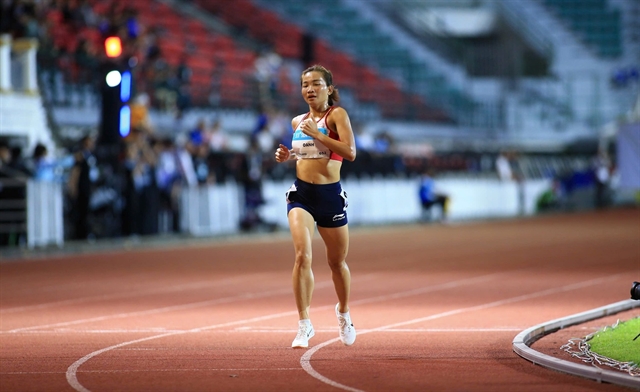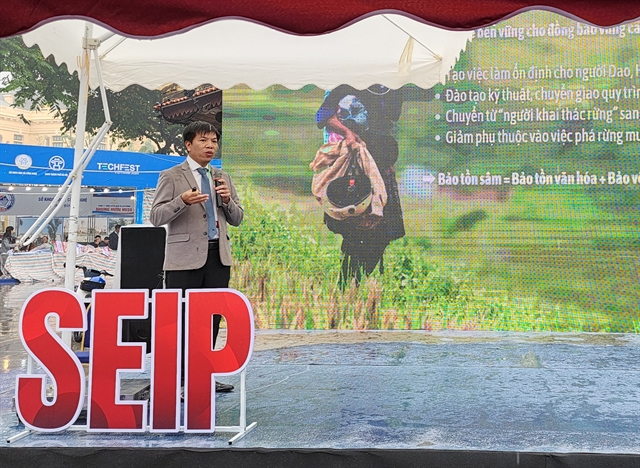 Society
Society

 |
| A view of Bù Đăng District. The district is the gateway connecting the southeast region with the (Tây Nguyên) Central Highlands. — VNA/VNS Photo Nhật Bình |
BÌNH PHƯỚC — Fifty years after liberation, Bù Đăng District in the southern province of Bình Phước has emerged as a peaceful and green locality, with improved infrastructure, a growing economy, and better living conditions for its people.
Once a fierce battlefield, Bù Đăng has transformed into a land of lush forests and growing prosperity, with roads, electricity, schools, and healthcare in every village. Life keeps improving.
During the resistance war against US imperialism, Bù Đăng was a key battleground. Despite intense attacks, local people and soldiers stood firm, building revolutionary bases in enemy territory such as Nửa Lon in Đăk Nhau Commune and Cộng Sản Hamlet in Nghĩa Trung Commune.
After the 1973 Paris Peace Agreement, with conditions favouring the southern revolution, the Politburo approved the Đường 14 – Phước Long campaign. Under the campaign, revolutionary forces took full control of Đức Phong, the district’s administrative centre, and completely liberated Bù Đăng on December 14, 1974.
Vũ Lương, secretary of the Bù Đăng District Party Committee, said the district holds strategic, economic and defence importance, with National Highway 14 running through it, linking the Tây Nguyên (Central Highlands) region to the southeast region.
Bù Đăng was a key revolutionary base in Phước Long Province (now Bình Phước) during the resistance war and hosted the first battle of the Đường 14 – Phước Long campaign.
The campaign significantly contributed to the 1975 Spring General Offensive and Uprising, which led to the liberation of the South and reunification of the country.
For their outstanding contributions during the resistance war, Bù Đăng and five of its communes – Đồng Nai, Bom Bo, Thống Nhất, Nghĩa Trung and Đăk Nhau – have been awarded the prestigious title “Hero of the People’s Armed Forces”.
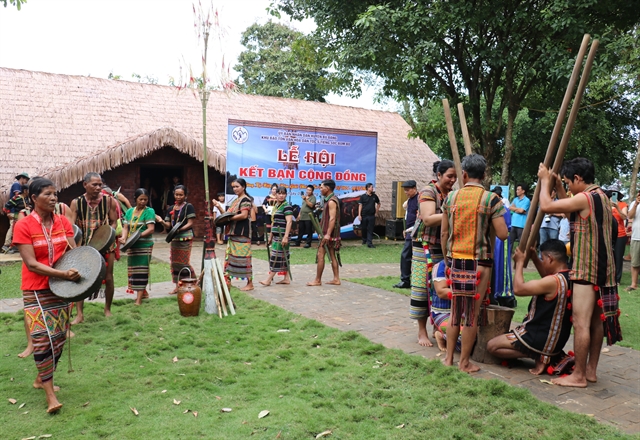 |
| Bù Đăng District focuses on preserving and promoting the traditional values of local ethnic communities. — VNA/VNS Photo Nhật Bình |
Significant growth
After liberation, Bù Đăng was merged into Phước Long District in November 1976. However, due to its large area, poor infrastructure and growing population, it faced many difficulties.
It was re-established on July 4, 1988.
Nguyễn Văn Lưu, deputy chairman of the Bù Đăng District People’s Committee, said the district used to have a high poverty rate and weak socio-economic infrastructure.
After 50 years of development, the economy has grown steadily, living standards have significantly improved, and the poverty rate has dropped to 0.31 per cent now, he said.
The district now has 16 communes and a town, with a population of around 150,000. Infrastructure has improved, with all inter-hamlet and inter-commune roads paved.
About 99 per cent of households are connected to the national grid, and 99.85 per cent have access to clean water. Cultural facilities have also been upgraded from the district to grassroots levels.
Agriculture makes up 40 per cent of the district’s economy, followed by trade and services at 34 per cent, and industry at 26 per cent.
The district’s per capita income reached VNĐ77 million (US$3,000) last year.
The district’s achievements are the result of the combined efforts of the Party, government, people, and businesses, particularly the unity, resilience, and determination of its ethnic communities.
The district has 31 ethnic groups living together in harmony, making up about 40 per cent of its population.
Điểu Mon, an ethnic resident of Bom Bo Village in Bom Bo Commune, said: "Today, locals have stable housing and farmland, and all school-aged children attend school. Life has become more stable."
For its achievements over the past 50 years, the district was awarded the Second-class Labour Order at its 50th liberation anniversary celebration.
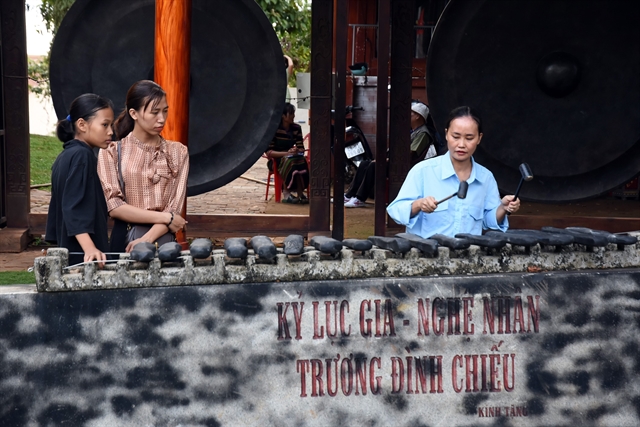 |
| Tourists watch a đàn đá (lithophone) performance at the S’tiêng Ethnic Culture Preservation Site in Bom Bo Village in Bù Đăng District. — VNA/VNS Photo Nhật Bình |
The district will continue prioritising agriculture by creating large-scale farming zones, promoting clean and high-tech practices, and developing value chains for its products, according to its People’s Committee.
It plans to develop agro-forestry processing industries alongside raw material zones and meet new-style rural development criteria, especially in ethnic minority areas, while promoting sustainable poverty reduction.
The district seeks to harness its potential, effectively mobilise resources, and pursue reforms to drive socio-economic growth.
It continues to preserve and promote ethnic cultural heritage by restoring traditional festivals like the Bom Bo Village drum festival and other unique celebrations. It is also developing tourism at historical and natural sites such as the Đứng, Voi, and Pan Toong waterfalls, the Bù Lạch Grassland, and Bom Bo Village.
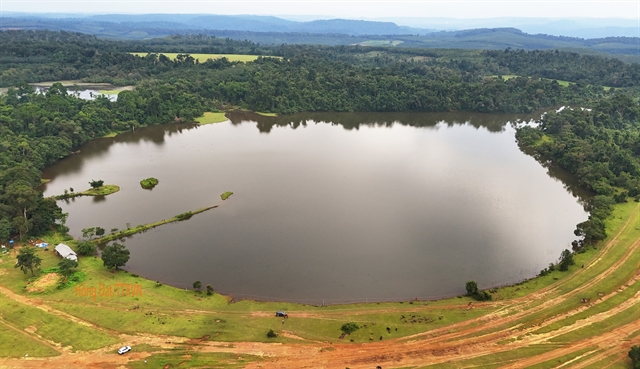 |
| Bàu nước lớn (a large natural pond) is located in the untouched, peaceful landscape of the Bù Lạch Grassland, an ecotourism site in Bù Đăng District. — VNA/VNS Photo Hồng Đạt |
With its low-lying plateau terrain, scenic mountains and forests, the district holds great potential for further tourism development.
The district will take bold, practical steps suited to its resources and conditions, following the motto: “Dare to think, dare to do, dare to take responsibility, dare to speak, dare to innovate, and dare to face challenges,” Lưu said. — VNS


